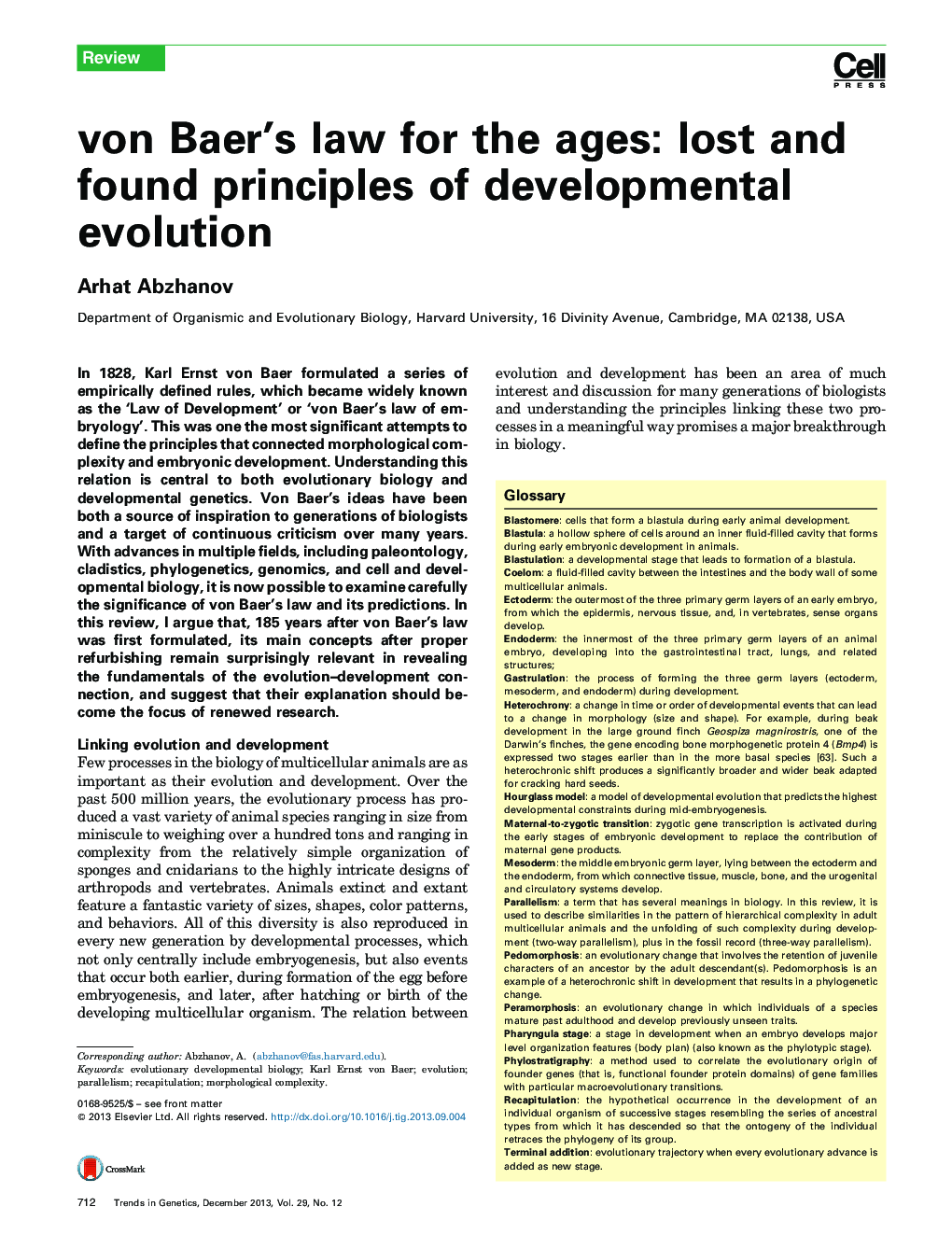| Article ID | Journal | Published Year | Pages | File Type |
|---|---|---|---|---|
| 2824853 | Trends in Genetics | 2013 | 11 Pages |
•I provide a historical overview of key ideas preceding von Baer's law.•I describe the most important findings made by Karl von Baer as an embryologist and their impact on other important thinkers of his time.•I discuss the 1st and 2nd postulates of von Baer's law from the perspective of modern phylogeny and cladistics.•I explain how some of the latest discoveries in modern molecular developmental genetics support the idea of phylotypic stage and progressive divergence.•I argue that von Baer's law could and should be used in a refurbished form as a foundation for modern evolutionary developmental biology.
In 1828, Karl Ernst von Baer formulated a series of empirically defined rules, which became widely known as the ‘Law of Development’ or ‘von Baer's law of embryology’. This was one the most significant attempts to define the principles that connected morphological complexity and embryonic development. Understanding this relation is central to both evolutionary biology and developmental genetics. Von Baer's ideas have been both a source of inspiration to generations of biologists and a target of continuous criticism over many years. With advances in multiple fields, including paleontology, cladistics, phylogenetics, genomics, and cell and developmental biology, it is now possible to examine carefully the significance of von Baer's law and its predictions. In this review, I argue that, 185 years after von Baer's law was first formulated, its main concepts after proper refurbishing remain surprisingly relevant in revealing the fundamentals of the evolution–development connection, and suggest that their explanation should become the focus of renewed research.
